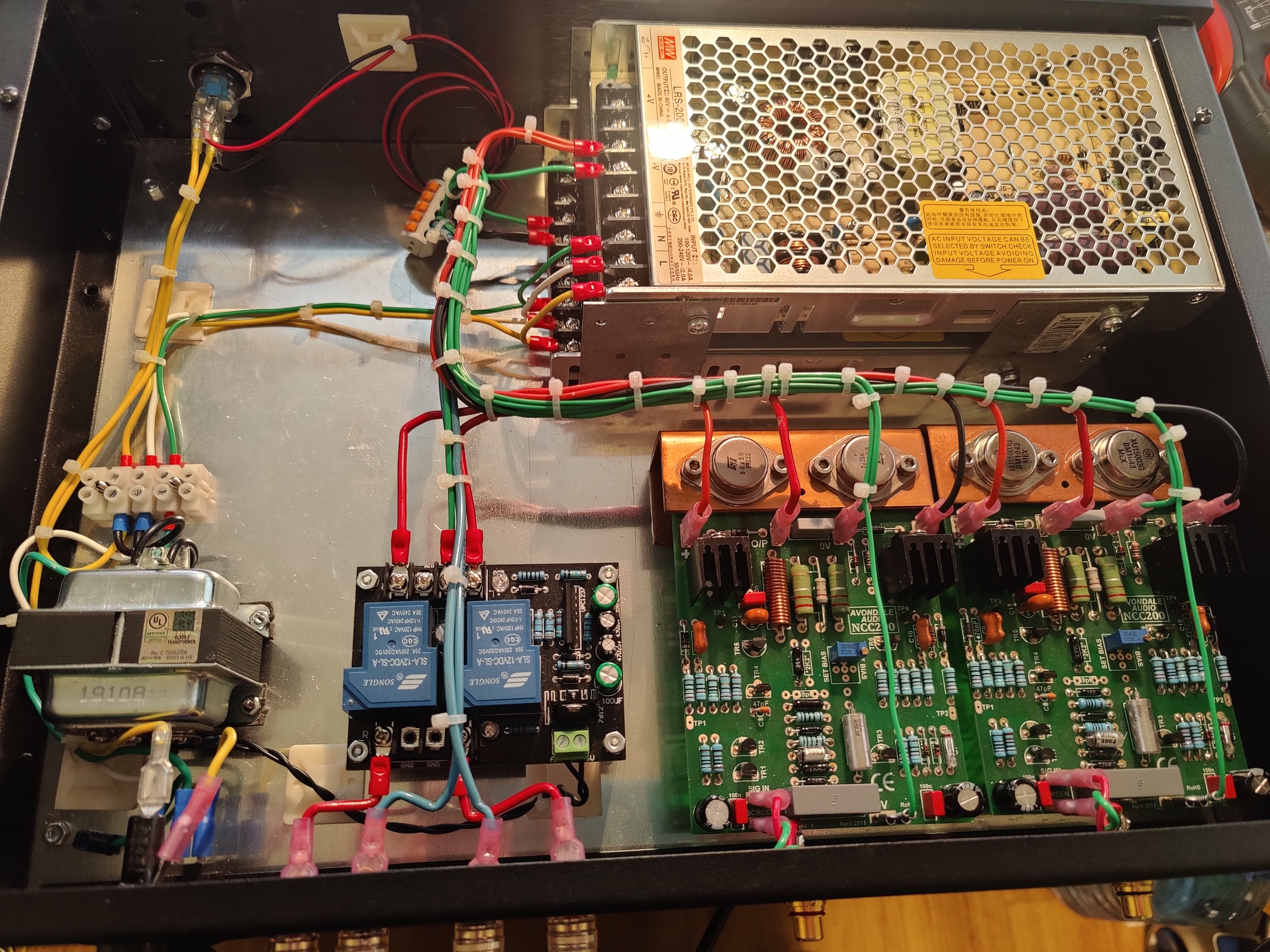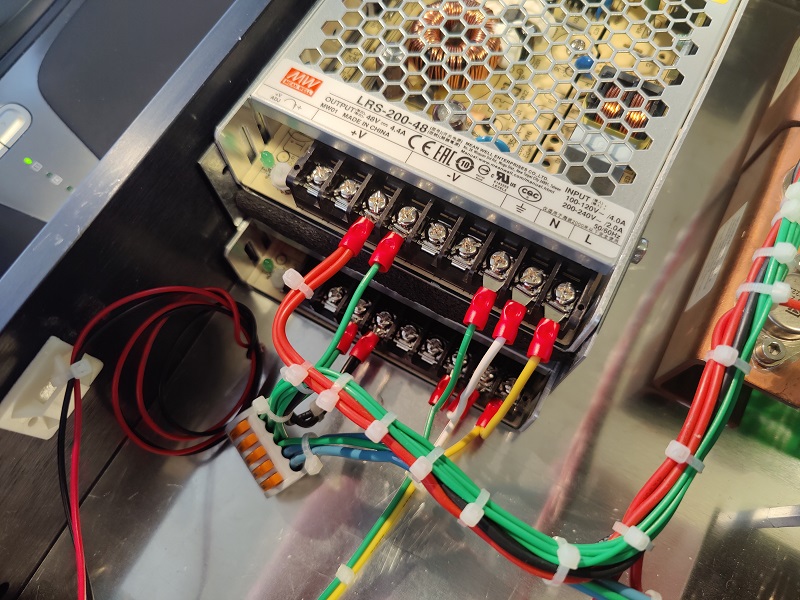Mike Hanson
Trying to understand...
I hooked up an NCC200, and same whine.
Time to rewire the grounds...
Time to rewire the grounds...
That's a good point, and easy to test. However, if that's the case, why did it not buzz with the passive resistors?Another late thought - and before you re-wire - have you tried running the smps boxes you have at/close the specced 36v output,just in case that lifting the output 10-12% might have also moved their internal compensation into a corner it is not happy with the apparent loading ..?
Keep going! : )
Open. I could try shorting them.er. Um. Still thinking...
BTW - when you test this -is the amp signalinput open, or connected to a live preamp?
If the first - have you tried with the amp signal inputs shorted?
you mentioned a potential plan to use some of these smaller units to power the input stage of the NCC300. Did you ever try that, or is your Mean-Well experience only with the heftier LRS-200-48? Perhaps these amp boards can only be supplied by the bigger units. If so, that would mean my only option is the power both channels from a single pair of supplies, rather than running them as dual mono.
It's not sound coming from the speakers. The output isn't even hooked up at this stage. The whine is coming directly from the SMPS units themselves, in response to the amp board(s) as loads. They don't whine for simple resistors with the same current load.I think its probably the front end of the nap circuit which is sensitive to the ps noise
I finished putting the amp together today, and I'm actually quite pleased by the results. I was a bit concerned, given laverda's comments about the lack of bass with a QUDOS. At least with the NCC200 modules, it seems perfectly adequate. I can't discern an appreciable difference between this and a toroidal CT transformer with CAP6 or equivalent.
Granted, the two SMPS units together are rated to provide 400W, which is far in excess of the requirements of the two amp modules, which will likely draw at most half of that, and usually much, much less.
Thanks for your inspiration!Glad you got there in the end Mike.
Thanks for your inspiration!
BTW, I just started another thread, still hoping to utilize these NAP140s. We'll see how that plays out...







